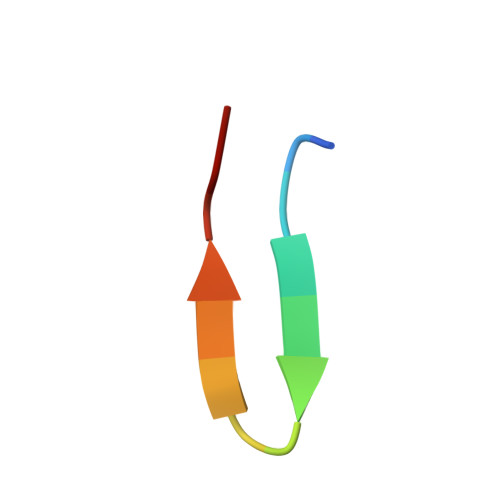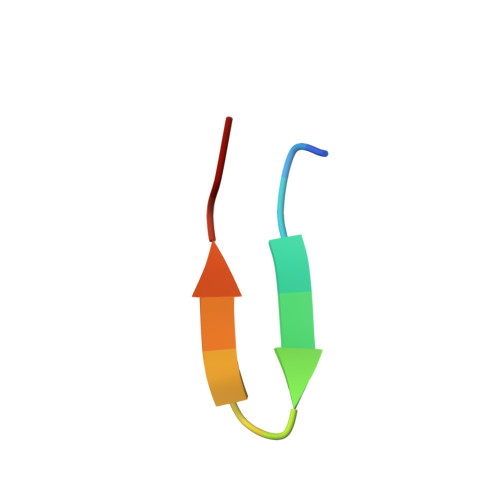Combinatorial approaches: a new tool to search for highly structured beta-hairpin peptides.
Pastor, M.T., Lopez de la Paz, M., Lacroix, E., Serrano, L., Perez-Paya, E.(2002) Proc Natl Acad Sci U S A 99: 614-619
- PubMed: 11782528
- DOI: https://doi.org/10.1073/pnas.012583999
- Primary Citation of Related Structures:
1J4M, 1K43 - PubMed Abstract:
Here we present a combinatorial approach to evolve a stable beta-hairpin fold in a linear peptide. Starting with a de novo-designed linear peptide that shows a beta-hairpin structure population of around 30%, we selected four positions to build up a combinatorial library of 20(4) sequences. Deconvolution of the library using circular dichroism reduced such a sequence complexity to 36 defined sequences. Circular dichroism and NMR of these peptides resulted in the identification of two linear 14-aa-long peptides that in plain buffered solutions showed a percentage of beta-hairpin structure higher than 70%. Our results show how combinatorial approaches can be used to obtain highly structured peptide sequences that could be used as templates in which functionality can be introduced.
Organizational Affiliation:
Department of Biochemistry and Molecular Biology, University of València, València, E-46100 Burjassot, Spain.
















